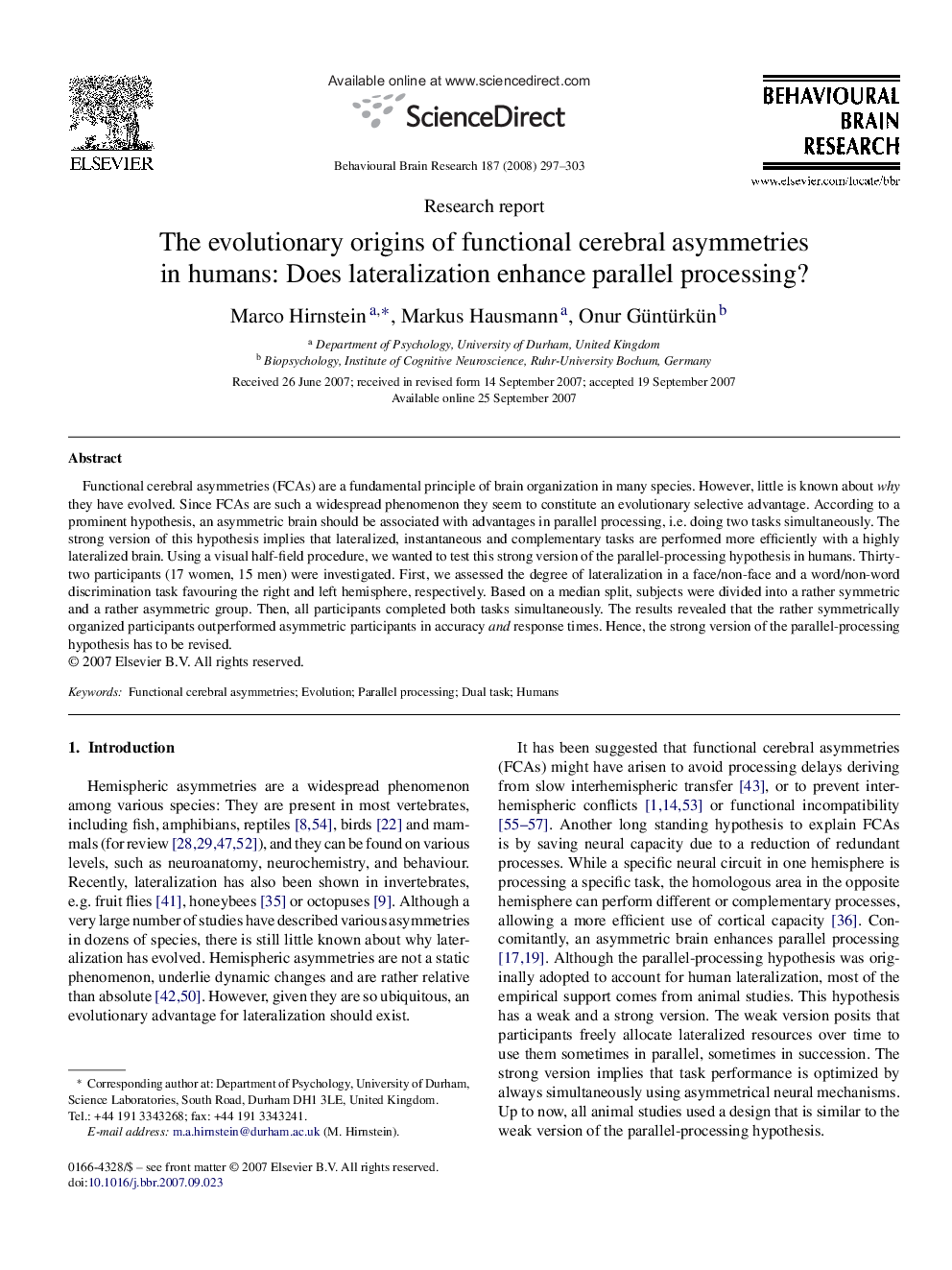| Article ID | Journal | Published Year | Pages | File Type |
|---|---|---|---|---|
| 4315523 | Behavioural Brain Research | 2008 | 7 Pages |
Functional cerebral asymmetries (FCAs) are a fundamental principle of brain organization in many species. However, little is known about why they have evolved. Since FCAs are such a widespread phenomenon they seem to constitute an evolutionary selective advantage. According to a prominent hypothesis, an asymmetric brain should be associated with advantages in parallel processing, i.e. doing two tasks simultaneously. The strong version of this hypothesis implies that lateralized, instantaneous and complementary tasks are performed more efficiently with a highly lateralized brain. Using a visual half-field procedure, we wanted to test this strong version of the parallel-processing hypothesis in humans. Thirty-two participants (17 women, 15 men) were investigated. First, we assessed the degree of lateralization in a face/non-face and a word/non-word discrimination task favouring the right and left hemisphere, respectively. Based on a median split, subjects were divided into a rather symmetric and a rather asymmetric group. Then, all participants completed both tasks simultaneously. The results revealed that the rather symmetrically organized participants outperformed asymmetric participants in accuracy and response times. Hence, the strong version of the parallel-processing hypothesis has to be revised.
